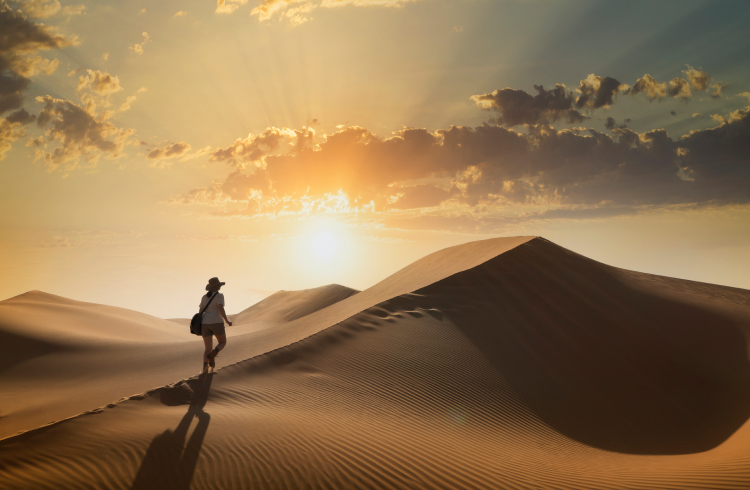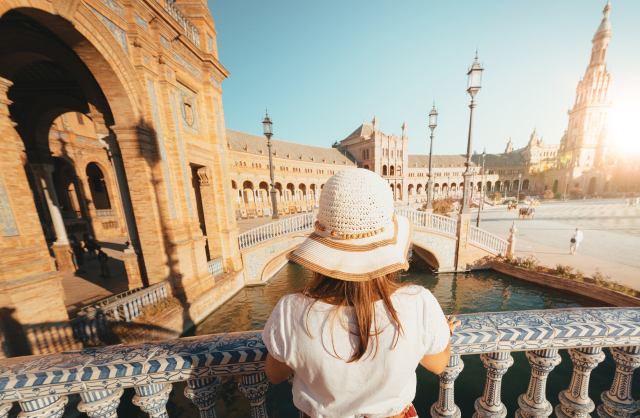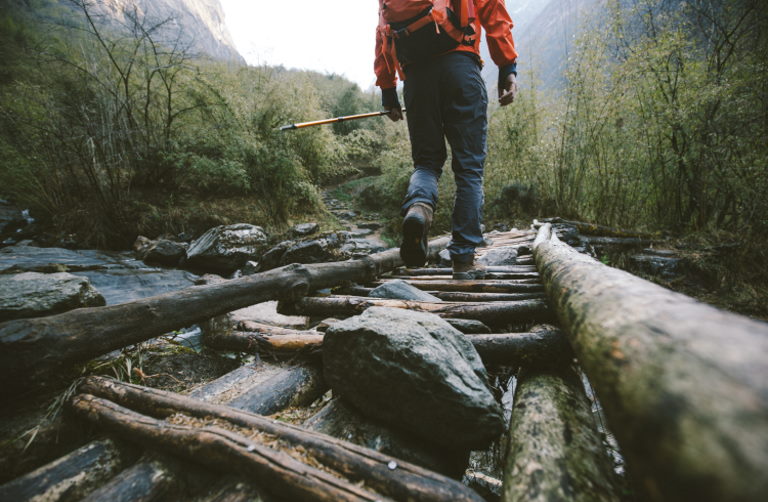How to Stay Safe and Hydrated When Traveling in Extreme Heat
With heatwaves becoming the norm around the world, here’s how to cope and stay safe when traveling in extreme heat conditions.
 Photo © Getty Images / Buena Vista Images
Photo © Getty Images / Buena Vista Images
- Stay hydrated
- Travel with snacks
- Take regular activity breaks
- Wear sunscreen
- Sun-protective clothing and headwear
- Avoid the midday sun
The world is seeing hotter temperatures, year after year. In June 2024, temperatures in Mecca reached 125°F (52°C), causing hundreds of fatalities among Hajj pilgrims. And the western and southern US experienced record-breaking heatwaves in late June and early July this year. It goes without saying that when the weather heats up, it’s important to stay hydrated; but water isn’t the only factor in staying cool in the extreme heat. Here’s what you need to know about staying safe and hydrated when traveling in hot climates and unusually hot weather.
Stay hydrated
Regardless of how long you’ll be in the sun, it’s crucial to always to bring sufficient water along. If you do a lot of hiking, you may even want to invest in a hydration pack, which is basically a mini backpack with a removable “water bladder” inside. A tube connects the water bladder to a mouthpiece, which runs up and along one of the backpack’s straps so you can easily sip while walking. These hydration packs come in different sizes and can usually accommodate some snacks, your phone, and perhaps a light jacket. Many large backpacker-style backpacks also have a hydration sleeve to slide the bladder in, so you don’t have to purchase separate bladders for different backpacks.
If a hydration pack isn’t your style (or it’s not in your budget), there’s nothing wrong with packing good old-fashioned reusable water bottles. If you’ll need more water than you can or want to carry that day, bring a high-quality water filter so you can drink from streams, rivers, and questionable public water sources. Some travelers like to bring one large water bottle or canteen, but I like to bring several small ones since I think they’re easier to whip out and drink from.
Most backpacks have side pockets that can accommodate water bottles; if not, you can throw them inside if they are leak-proof. You could also attach bottles to your backpack or hip pouch using a carabiner if your bottles have handles. If you want to combine the convenience of small water bottles and the easy access of a hydration pack’s sip tube, you can buy a holster attachment for your backpack’s front strap to store your bottle right on your chest. And, while insulated bottles aren’t necessary, ice-cold water is especially refreshing during a long hot hike.
Also, remember that as important as drinking water is when you’re active outdoors, it’s just as important to replenish electrolytes if you’re doing strenuous activities. Electrolyte supplements help restore the salt and minerals lost through sweat, which helps prevent fatigue. Instead of buying pre-made energy drinks, which are full of artificial colors and flavors and which come in earth-destroying plastic bottles, you can purchase small electrolyte tabs that you simply drop into your water to dissolve.
Travel with snacks
Though overeating can make you feel extra sluggish and uncomfortable in extremely hot weather, getting enough calories in your system to fuel your adventures is important. Always eat breakfast if you’re heading out on a hike or an action-packed day, and bring along snacks to munch on when you get hungry. While headaches and dizziness are often a symptom of dehydration, they can also be a symptom of low blood sugar. If you begin to feel lightheaded, it’s time to drink and eat up. In fact, it’s past the time you should have been drinking and eating, so you really need to pause, take a break, and start sipping and snacking.

Take regular activity breaks
If an adventure is really that good, it’s possible you might not take enough breaks. After all, the trail is just another mile long, you want to finish before sunset, or you’re having so much fun that you simply forget to stop. If it’s very hot outside, it’s imperative that you stop regularly, even if you don’t feel tired, hungry, or thirsty. If there is shade, find it and sit down for a few minutes; you’ll be surprised by how refreshed you can feel after only a few minutes of resting in the shade. Use the break to throw another electrolyte tab in your water, eat an apple or granola bar, or just relax and breathe. If you’re out with someone who moves faster than you, don’t feel embarrassed to let them know you need a break. It may not occur to them that you’re tired or overheated, and it doesn’t help anyone if you push yourself too hard and suffer heat stroke.
Wear sunscreen
Sunscreen is important anytime you’re in the sun, and if you’re traveling in a hot climate, it’s extra important to re-apply frequently since you’ll likely be sweating it off. According to Johns Hopkins Medicine, SPF 30 may be good enough for day-to-day use, but if you are outdoors, they recommend using SPF 60 or greater and reapplying it about every two hours. If you’re sweating a lot or if you’ve been swimming, you may need to reapply even more often. Also, remember that even if it’s cloudy out, the sun can still burn, so wear sunscreen regardless of what the skies look like.
Sun-protective clothing and headwear
No sunscreen is perfect and it can be annoying to apply and reapply every two hours, so wearing sun-protective clothing can be very convenient. Sunglasses may protect your eyes, but wide-brimmed hats provide additional coverage for the eyes and also shield your neck and face. Lightweight, long-sleeved shirts and pants are also readily available, and many hiking pants are “convertible,” so you can zip off the bottoms to easily turn them into shorts. UPF is the clothing-rating equivalent to SPF and for the best protection, choose clothes with a UPF rating above 50.
While you might think that wearing long sleeves in the heat is counter-intuitive, know that long sleeves protect your skin from damaging UV rays and also help keep you cool by providing a barrier between you and the sun. The best fabrics are lightweight and wick away moisture, as cotton can trap your sweat and leave you walking around in a hot and soggy shirt all day. Instead, look for light-colored clothing made from wool or synthetics that were specially designed for the heat.
Since long-sleeved shirts can be warmer than short-sleeved shirts when you’re indoors or in the shade, I like to pair short-sleeved shirts with detachable UPF arm sleeves. This way, I can easily whip them off, similar to how convertible pants zip off at the bottoms. I use cycling sleeves for biking, hiking, and sightseeing since they are specifically designed to protect you from the sun without causing you to overheat.
Avoid the midday sun and extreme heat
Regardless of where you are and what time of year it is, the sun is usually strongest – and the temperature usually highest – right around midday and in the early afternoon. By heading out early (or even late in the afternoon), you can avoid the hottest time of day, which is safer and more comfortable. If you absolutely cannot avoid being out during peak sunshine, aim for activities and itineraries that include shade. For instance, instead of mid-day desert hikes where there is nowhere to duck into the shade, opt for a forested hike where the leafy branches block out some sun. If there’s a river, lake, or water source where you can safely jump in, consider taking a dip to cool down.
If temperatures are unusually and extremely high, consider not venturing outside at all. Instead, stay indoors with windows and doors closed, blinds or shades closed, and limit your physical activity.

No Comments